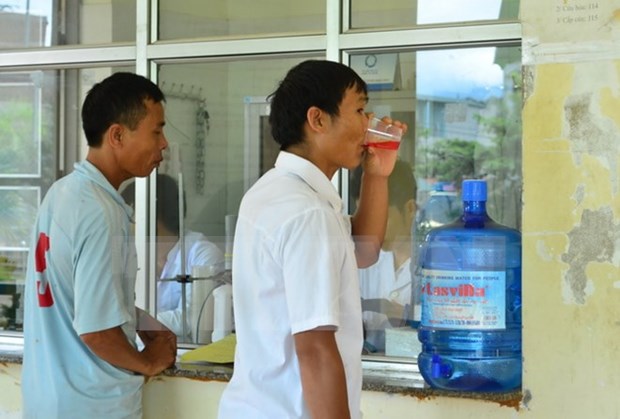Vietnam has long way to go to 90-90-90 targets
Vietnam is far from achieving the 90-90-90 targets set by the United Nations (UN) to end HIV/AIDS by 2020, said Dr. Nguyen Hoang Long, head of the Department of HIV/AIDS Prevention and Control.
 Drug users take doses of oral methadone at a HIV/AIDS prevention centre. (Source: VNA)
Drug users take doses of oral methadone at a HIV/AIDS prevention centre. (Source: VNA)Hanoi (VNA) – Vietnam is far from achieving the 90-90-90 targets set by the United Nations (UN) to end HIV/AIDS by 2020, said Dr. Nguyen Hoang Long, head of the Ministry of Health’s Department of HIV/AIDS Prevention and Control.
The UN’s 90-90-90 plan sets three targets: 90 percent of all people living with HIV will know their HIV status, 90 percent of all people diagnosed with HIV will receive sustained antiretroviral (ARV) therapy and 90 percent of all people on ARV treatment will have durable viral suppression by 2020.
About 78 percent of HIV carriers in Vietnam know their status. Meanwhile, only 45 percent of HIV-positive people are currently receiving ARV therapy and the number of people on ARV treatment with durable suppression remains unknown due to the country’s inability to perform large-scale testing.
Statistics by the Department of HIV/AIDS Prevention and Control show that Vietnam had more than 12,000 new infections and 2,000-3,000 AIDS-related deaths annually, and is home to 227,000 people who have been diagnosed with HIV to date.
However, services for HIV/AIDS prevention and control still lag behind demand. Supplies of condoms and syringes only met 40 to 50 percent of demand, while methadone treatment reached merely 40 percent of targeted 80,000 drug addicts.
Though the country has seen an overall fall in the number of new cases found every year, new infections are increasing in remote and mountainous areas where coverage of HIV treatment and care services remains low, and there is lack of access to information about HIV.
According to Dam Van Huong, Director of the Son La Centre for HIV/AIDS Prevention and Control, HIV/AIDS communication campaigns and services in the mountainous, northern Son La province are yet to be efficient due to discrimination against people living with HIV, low education levels among residents, poor transportation systems and the lack of local healthcare workers.
It is estimated that the province has about 600 new HIV infections annually. New infections in women and children are on the rise, he noted.
To remove these challenges, Long stressed the need to increase State funding for HIV/AIDS prevention and control, and prioritise efforts for HIV prevention and care in high-risk areas.
Vietnam must also scale up HIV testing programmes in community settings and expand its network of the clinics that perform HIV confirmatory tests at the district level, he added.-VNA













